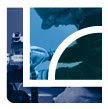Today we have been editing together our storyboard to produce our animatic. Dan has been working on the soundtrack to make it longer and added some computerised sounds in. It will need to be even longer for when it comes to our actual opening but it saves us a lot of time as we already have the basic sound track. Jon has been editing together the actual animatic in final cut. We then moved over the soundtrack into the animatic and rendered it together. Rob has been helping Dan over the 30 minutes that he has been in the lesson (He was late today).
----------------------------------------------------------------------------------------------------------------
Jon, Rob, Dan
